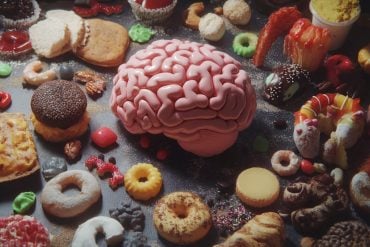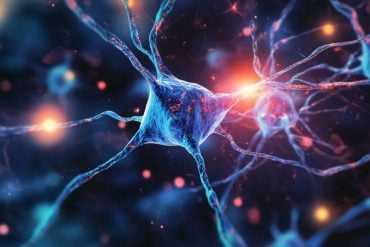Summary: Different types of reward have unique effects on the basal ganglia nuclei. Food rewards influence the left hemisphere of the brain, while erotic rewards engage the right lateral globus and left caudate. Financial rewards engage the basal ganglia bilaterally.
Source: National Research University Higher School of Economics
Researchers from HSE University, Skoltech and the University of Toronto analyzed data from 190 fMRI studies and found out that food, sex, and money implicate similar brain regions whereas different types of reward favor the left and right hemispheres differently. The paper is to be published in Brain Imaging and Behavior.
Food is a reward when we are hungry, a primary reward. Erotic images are also considered a primary reward because mating is an essential obligation to our species. Money is a resource that affords our survival in society, but it is a secondary reward because it is a human creation. In any decision-making process, the brain assesses potential profit – i.e., the size of reward that can be received for an action. Reactions to various types of rewards are processed by various brain structures. A key brain region associated with all reward types is the basal ganglia – a cluster of gray matter nuclei located at the base of the forebrain, originally known for its implication in motor and regulatory function.
However, it has been unclear as to how the activity of basal ganglia varies depending on the type of reward offered. To find the answer to this question, the researchers conducted a series of meta-analyses of 190 fMRI (functional magnetic resonance imaging) studies, which observed activities in different brain areas in response to information on a reward–food, sexual, or monetary. A total of 5,551 participants took part in these studies.

The analyses indicate that all reward types engaged the basal ganglia nuclei differently. ‘Food rewards favor the left hemisphere of the brain; erotic rewards favor the right lateral globus pallidus and the left caudate body. Money rewards engage the basal ganglia bilaterally, including its most anterior part–the nucleus accumbens. The connection between these nuclei and other areas of the brain also depends on the reward type,’ says Marie Arsalidou, Assistant Professor at the HSE School of Psychology. Based on the data generated, the researchers drew up and put forth a model of common reward processing via the basal ganglia and separate models for money, sexual, and food rewards.
Understanding the involvement of brain structures in processing different reward types can help us understand human decision-making mechanisms, from one’s choice of a chocolate bar instead of a healthy breakfast, to attraction to potential mates and certain investment plans.
Source:
National Research University Higher School of Economics
Media Contacts:
Liudmila Mezentseva – National Research University Higher School of Economics
Image Source:
The image is in the public domain.
Original Research: Closed access
“Basal ganglia lateralization in different types of reward”. Marie Arsalidou, Sagana Vijayarajah & Maksim Sharaev.
Brain Imaging and Behavior doi:10.1007/s11682-019-00215-3.
Abstract
Basal ganglia lateralization in different types of reward
Reward processing is a fundamental human activity. The basal ganglia are recognized for their role in reward processes; however, specific roles of the different nuclei (e.g., nucleus accumbens, caudate, putamen and globus pallidus) remain unclear. Using quantitative meta-analyses we assessed whole-brain and basal ganglia specific contributions to money, erotic, and food reward processing. We analyzed data from 190 fMRI studies which reported stereotaxic coordinates of whole-brain, within-group results from healthy adult participants. Results showed concordance in overlapping and distinct cortical and sub-cortical brain regions as a function of reward type. Common to all reward types was concordance in basal ganglia nuclei, with distinct differences in hemispheric dominance and spatial extent in response to the different reward types. Food reward processing favored the right hemisphere; erotic rewards favored the right lateral globus pallidus and left caudate body. Money rewards engaged the basal ganglia bilaterally including its most anterior part, nucleus accumbens. We conclude by proposing a model of common reward processing in the basal ganglia and separate models for money, erotic, and food rewards.






